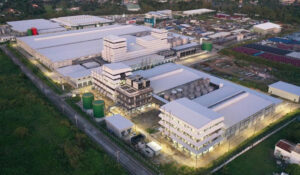Bilibid or not in Mindoro

About a year ago, the Department of Justice (DoJ) formed a group to take the lead in constructing new prisons for people convicted of heinous crimes. This was about two years after a law was passed by Congress in 2022 for the construction of at least three new maximum-security prisons around the country.
This is considering that the New Bilibid Prison in Muntinlupa needs upgrading since it was built by the Philippine Commonwealth government in 1940 and is now 85 years old. Prior to this, convicts went to the Old Bilibid Prison or Bilibid Viejo, which was built by the Spanish Colonial Government in the 1860s. Bilibid Viejo is still in use today as the City Jail of Manila.
Just this week, US President Donald Trump ordered US officials to rebuild and enlarge Alcatraz prison island in California, which was built in the 1934 but was shut down in 1963 due to high operating costs. President Trump cited the need for a new prison to “house America’s most ruthless and violent offenders.”
To an extent, the Philippine government had something similar to Alcatraz in mind. With Republic Act No. 11928, or the “Separate Facility for Heinous Crimes Act,” the government is now building at least one high security jail each in Luzon, Visayas, and Mindanao to hold high-level offenders or those sentenced to life imprisonment.
The law provides that the new facility will host those convicted of treason; piracy in general and mutiny on the high seas and in Philippine waters; qualified piracy; qualified bribery; parricide; murder; infanticide; kidnapping and serious illegal detention; robbery with violence against or intimidation of persons; destructive arson; rape; human trafficking; and illegal drugs trafficking.
The law also provides that a new state-of-the-art jail will be built “in a suitable location to be determined by the Secretary of Justice, away from the general population and other PDLs [Persons Deprived of Liberty] and preferably within a military establishment or on an island separate from the mainland… to ensure that there is no unwarranted contact or communication from outside of the penal institution.”
Given these requirements, I am surprised that the government decided on Sablayan, Occidental Mindoro as the site for the first of three facilities to be built. While there is an existing penal farm in the area, frankly, I feel Sablayan is not isolated enough to hold those convicted of heinous crimes.
The original Sablayan Prison and Penal Farm was established in 1954 on the western side of Mindoro island. But, the prison has been undergoing improvements lately to also host a super maximum-security facility. Its redevelopment will finish by 2028, and by then, it will have one of three new jails to hold high-level offenders.
Since late 2024, about 300 inmates from Muntinlupa have already been transferred to Sablayan. The government wants all convicts in drug-related cases to be housed in a single high-security facility. The new high security prison, I believe, will be built adjacent to the existing facility.
Bidding for the second phase of the Sablayan project, with a budget of P300 million, was scheduled to be held last January. The government is looking for a design and build contractor to undertake the construction. The project should be completed within a year from the release of the notice to proceed.
The project will include a 3,000 square meter two-story dormitory that will house about 500 inmates. Also to be built around the dormitory is a three-meter-high concrete perimeter fence to cover a 50-hectare area. To date, however, it remains uncertain if the bidding last January was successful.
I doubt very much if there are local contractors specializing in prison construction. I guess we can expect the likes of Megawide, DMCI, San Miguel Corp., EEI, and other big contractors to have bid for the project. The bid is expected to be awarded to a winning contractor within this month.
My concern with Sablayan is that Occidental Mindoro is not exactly isolated. Sablayan town is a first-class municipality with a population of about 94,000 people (as of the 2020 census). A map of the area will show that the prison is just around 16 kilometers from the town center on the island’s western coast. About 10 kilometers south of the prison is the Pasugui Sub-Prison. And behind the Sablayan penal farm are Mt. Siburan, Mt. Baco, and the Iglit-Baco National Park.
I believe that any maximum-security prison should be some distance away from the general population and other prisons, maybe at least 25 kilometers away from any town with a population of more than 10,000. Mindoro, while an island, is populated by about 1.5 million people.
A maximum-security prison should also have controlled access. In Sablayan’s case, the penal farm is along the Mindoro West Coastal Road. Also, the Sablayan Penal Colony is about 17,000 hectares in size, which makes it difficult to secure. In comparison, Bilibid in Muntinlupa is only 375 hectares.
In my opinion, a maximum-security prison is preferably located within a military camp or on a small island under military control with restricted access. An island penitentiary is still ideal, like Alcatraz, on any of the uninhabited small islands in Manila Bay or off the coasts of Cavite, Zambales, Bataan, Palawan, or Quezon.
These include Carabao Island in Cavite, near Corregidor. I believe it is a former military installation and is presently uninhabited. It is also naturally isolated, but still within logistical reach of Metro Manila or Cavite. The same goes for the smaller Limbones Island, at the mouth of Manila Bay near the West Philippine Sea.
A solitary island prison is ideal if the government’s intent is to build specialized prisons to securely detain the most dangerous offenders, and to isolate them from other inmates so as limit their influence within the general prison population and curb illicit activities such as drug trafficking and organized crime.
Marvin Tort is a former managing editor of BusinessWorld, and a former chairman of the Philippine Press Council



